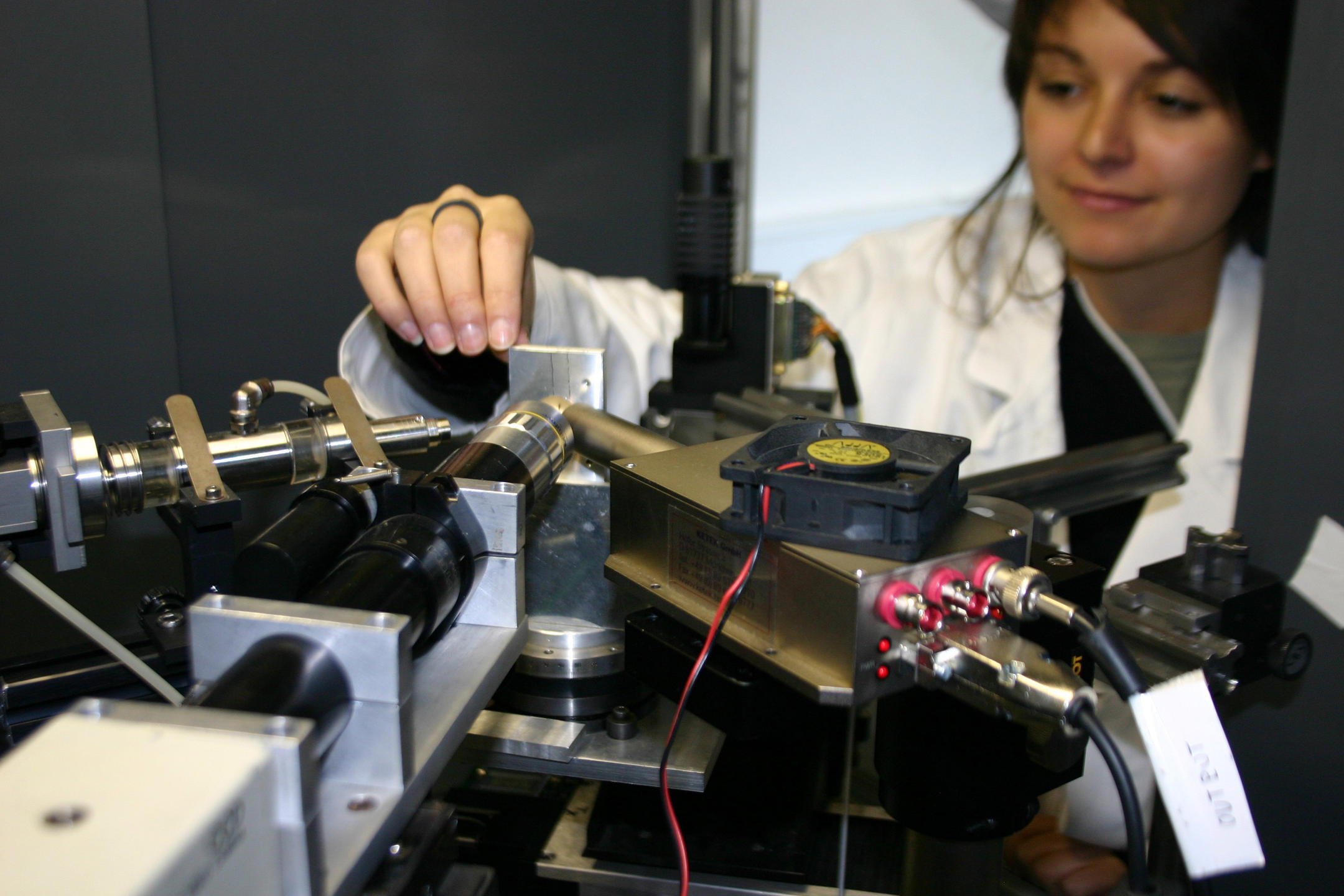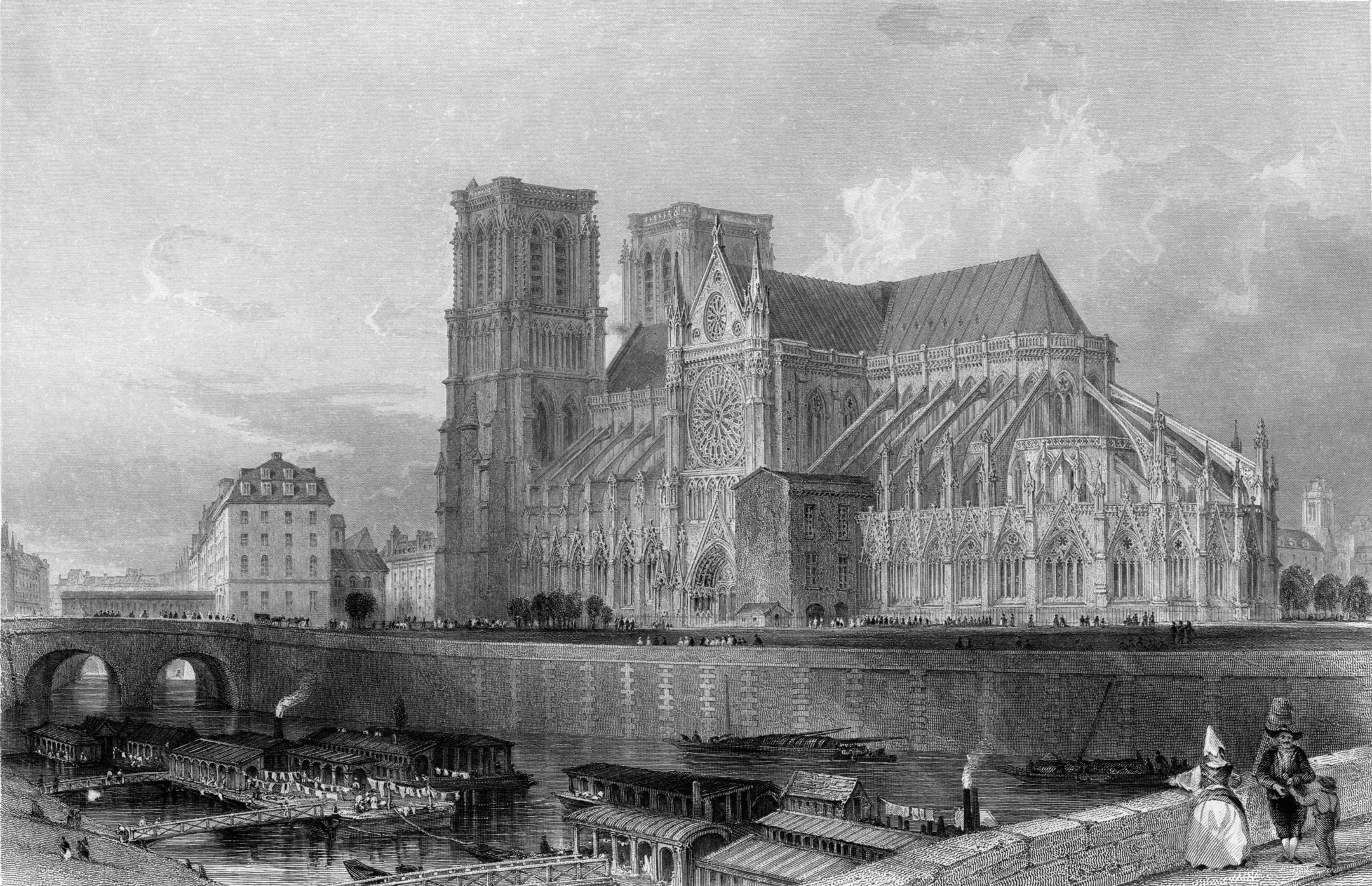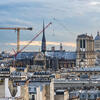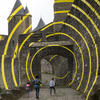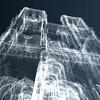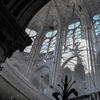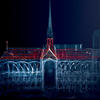You are here
Notre Dame: Research Steps In
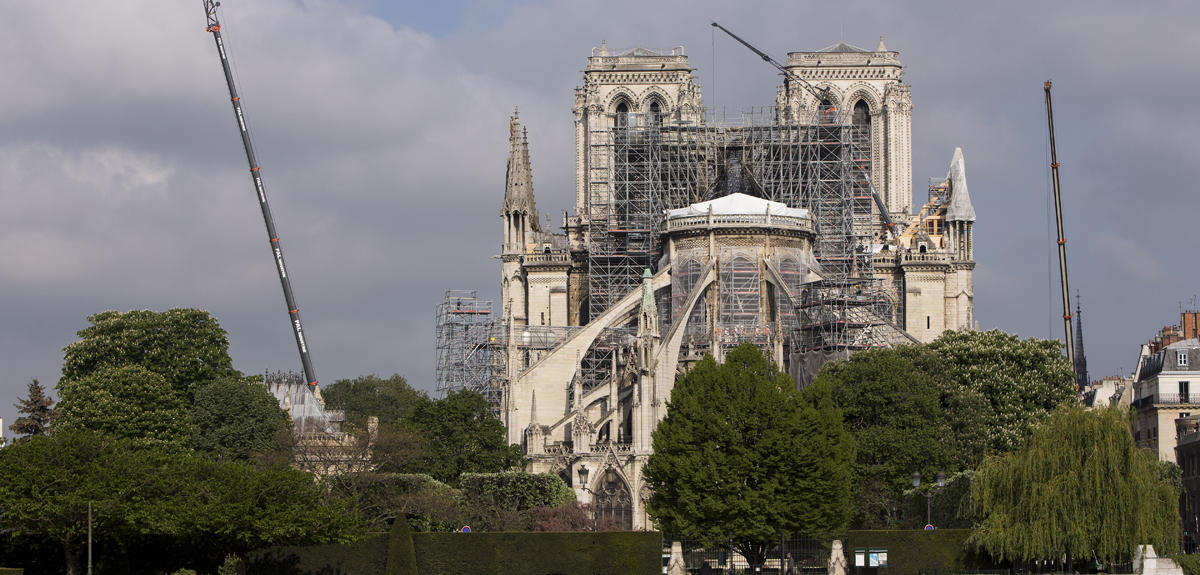
A number of CNRS laboratories submitted research proposals in response to the Notre Dame fire. How did this Task Force come about?
Philippe Dillman:1 The cathedral fire sent shock waves throughout the country, including in the scientific community. Very quickly, CNRS laboratories began submitting possible research subjects to the scientific Institutes. It soon became necessary to coordinate all of these initiatives and identify the restoration project’s needs in terms of science and technology, working in close cooperation with the different institutes and institutions involved, including the Ministry of Culture as well as the Association des Scientifiques pour la Restauration de Notre-Dame (Association of Scientists for the Restoration of Notre Dame).
Martine Regert:2 Immediately after the fire, many researchers expressed an interest in analysing for example the burned remnants of the wooden roof structure. They would thus be able to “read” the cathedral like an open book.
What main fields of research should the Task Force cover?
M.R.: Several key areas have already been identified: studying the organic materials in the cathedral, like the wood of the roof beams; secondly, looking at modelling techniques, gathering digital data and surveying the site; and thirdly, investigating the other types of materials like stone, metal and the glass of the stained glass windows. In addition, anthropological studies will offer perspectives on the incident, in particular the collective emotional reaction to the fire. By necessity, all of these projects will be based on studying the historical records of the cathedral conserved in the Archives Nationales. Despite the tragedy, the fire has opened new avenues of research, enabling access to materials that were previously inaccessible.
The idea is to pool researchers’ efforts based on these major cross-disciplinary projects and thus avoid redundancy. What will your roles be?
M.R.: To start with, we will organise pluridisciplinary meetings in the weeks to come, as part of the collaborations among the various institutes and the Ministry of Culture. Of course, our role will also be, through the working groups, to bring together researchers who may not know one another, so that they can collaborate and share their respective approaches. We are also going to compile all of our laboratories’ existing studies on Notre Dame – obviously, we’re not starting from scratch. For the moment, this is only the beginning, as we get everything in place.
The cathedral roof collapsed more than a month ago, leaving a huge mass of wood and other materials, whose volume is still being determined. What is the highest priority for the researchers?
M.R.: At this stage, the cathedral is not yet open to researchers, for obvious safety reasons. The first priority is to make sure that no scientific information is lost, that the remains of the roof structure are not moved haphazardly, for example, so that we can find out where the pieces fell during the fire. Great care must also be taken with the storage of the wood: it has to be kept under special conditions, in an open, well-ventilated space. The controlled removal of certain materials has already begun, with researchers contributing their expertise. The Greater Paris Regional Directorate of Cultural Affairs is in charge of these operations at the site.
P.D.: There are units from the Ministry of Culture3 already working on-site and doing a remarkable job. The Task Force’s mission will be to back up this emergency initial research, in order to continue the historical and scientific investigations of the cathedral.

This work can rely on the many past scientific studies of Notre Dame…
P.D.: Quite – Notre Dame Cathedral and other gothic monuments have been studied for decades, not only by historians and art historians, but also by building archaeologists, geophysicists and archaeometrists, who use physico-chemical methods to analyse materials, date them, understand their history, their origin, etc. So yes, we already have a body of knowledge on those used to build Notre Dame, which will be valuable for its restoration. Yet many scientific questions remain unanswered. The projects coordinated by the Task Force should remedy this, in addition to addressing the restoration problems.
Back in the 1990s, a CNRS study showed that most of the roof structure of the cathedral had been built in the 13th century, and that the oak making it up was not 300 years old at the time, as had been thought, but more like 100 years old. What other secrets could the roof beams reveal?
M.R.: The study of the wood used in this nearly 1,000-year-old roof will, for example, enable us to determine in greater detail, down to the year, the evolution of the climate in the Paris region. We can also find out where the oaks came from, how forests were managed back then, what kind of carpentry methods were employed… And of course, how this wood evolved over the centuries in relation to its environment.
P.D.: We will be able to study not only the materials that survived the fire intact, but also some of those that have been damaged or burned. Examining the carbonisation of the roof structure will yield important information, as the research teams can identify a species of wood from its charcoal, for example.
When thinking about the materials of Notre Dame, wood immediately comes to mind. But all of the old materials that were used in its construction over the centuries will be studied…
P.D.: Indeed. That is the case of lead, for example, which was used to cover the roof and to assemble the stained glass windows. If some lead pieces have been spared by the fire – which has yet to be confirmed – we will perhaps be able to analyse the origin of the metal. We must also address the environmental problems posed by the fire, especially the possible risk of lead pollution in the area around the cathedral. And we could also look at the stone and mortar of Notre Dame in order to specify their origin and the techniques chosen. In addition, knowing how the stone behaved during the fire will help in the restoration of the cathedral.
How will these studies of materials, coordinated by the Task Force, make use of technologies developed by CNRS laboratories?
P.D.: Many laboratories are ready to contribute their technologies and expertise to the Notre Dame project, and no doubt others will soon be identified. In the coming months, we will need to coordinate these proposals depending on how they meet the specific needs of the programme, so I can only give a few non-exhaustive examples. Drones, photogrammetry or LIDAR4 could help survey the building. For analysis using various physico-chemical methods (x-ray diffraction, x-ray fluorescence, Raman spectroscopy, LIBS,5 etc.), methodologies suitable for centuries-old materials have been developed in archaeometry laboratories such as the IRAMAT.
Isotopic studies to determine the origin of the materials could be carried out at the Laboratory for Sciences of Climate and Environment (LSCE),6 including radiocarbon dating at the ARTEMIS-LMC 147 platform. In addition, examining the roof structure will involve bioarchaeology laboratories,8 in particular concerning archaeobotanical analyses. Basic research over the longer term may even entail the use of the AGLAE9 accelerator, or the light lines of the Soleil10 synchrotron to carry out studies under extreme thermal or atmospheric conditions, in order to shed light on the effects of environmental stress.

What role will modelling and digital techniques have in the research projects?
M.R.: 3D surveys of the cathedral have been completed, providing crucial data that will give us a “snapshot” of Notre Dame immediately after the blaze, so that no information is lost.
P.D.: And that will be added to the archives we already have on the spatial data, which we will supplement with 3D models and the results of past and future physico-chemical measurements. The idea will then be to design a system that combines the digital spatial and physico-chemical data, so that we can, for example, click on a specific section of the vault in the computerised model and get all the information we need on the material. This ambitious project could be undertaken by the Models and Simulations for Architecture and Heritage (MAP) laboratory.11
We will also use data gathered before the fire, not only by researchers but also by non-specialists, who may have photographs of the nave from specific angles that will be useful for the restoration. This is the principle of crowdsourcing, which could be implemented by Archéovision12Huma-Num Very Large-Scale Research Infrastructure13 with the help of the 3D Consortium and the TGIR Huma-Num. These 3D digitisations will serve to document the restoration project.
Speaking of the project, President Emmanuel Macron promised reconstruction in five years. How will the Task Force and the research community in general be involved in the restoration?
M.R: In concrete terms, the researchers on the Task Force will not be making decisions on how the restoration proceeds, but will collaborate with the project manager. And of course, in cooperation with the Ministry of Culture, we could also study the behaviour and durability of the new materials used in the restoration.
P.D.: In addition, the expertise resulting from this Task Force will benefit not only Notre Dame but also many other gothic monuments! For example, understanding how the limestone elements burned will, we hope, provide a base of reference for studying other edifices that have been damaged by fire. It is an excellent opportunity to foster new knowledge and innovative analysis methods, and to consolidate the structuring of interdisciplinary research on ancient monuments.

During the restoration work, could there also be archaeological excavations in the cathedral?
P.D.: Excavations on ancient monuments usually rely on the techniques of building archaeology, but in the specific case of the cathedral we could also envision other approaches.
For example, if the renovation requires excavations to anchor temporary support structures, it could be an opportunity to study the foundations of Notre Dame, about which very little is known – in particular given that the restoration by Viollet-Le-DucFermer19th-century architect who restored many of France’s historical monuments. probably did not completely destroy the original substructure. There are still many things left to discover. However, all such proposals will have to be carefully examined in close cooperation with all of the specialists and institutions involved.
As we can see, the possibilities for research on Notre Dame are vast. What will happen next? What are your deadlines?
M.R.: For the moment we are giving ourselves five years – not because of anything the President has said, but simply because it corresponds to a standard five-year research project. After that time lapse, we hope to bring everyone together for a pluridisciplinary conference and the release of a publication summarising all the work that will have been done by then. The researchers are highly motivated. We also hope that the findings of these studies can be used to prevent similar tragedies, like the fires at Nantes Cathedral in 1972 and the National Museum of Brazil last September. Ideally, this will be one of the results of the research work on Notre Dame.
- 1. Philippe Dillmann is a CNRS senior researcher at the Institut de Recherche sur les Archéomatériaux (IRAMAT – CNRS / Université de Technologie de Belfort-Montbéliard / Université d’Orléans / Université Bordeaux-Montaigne) and the Laboratoire Archéomatériaux et Prévision de l’Altération (LAPA ), part of the Nanosciences et Innovation pour les Matériaux, la Biomédecine et l’Énergie (NIMBE) laboratory (CNRS/CEA).
- 2. Martine Regert is the deputy scientific director of the CNRS Institute of Ecology and Environment.
- 3. Such as the LRMH – Centre for Research on Preservation (CRC – CNRS / National Museum of Natural History / Ministry of Culture).
- 4. Light Detection and Ranging.
- 5. Laser-Induced Breakdown Spectroscopy.
- 6. CNRS / CEA / Université de Versailles Saint-Quentin.
- 7. Laboratoire de Mesure du Carbone 14 (CNRS / CEA / Institute of Radioprotection and Nuclear Safety / Ministry of Culture / French National Research Institute for Development).
- 8. Such as the Laboratoire d’Archéozoologie, Archéobotanique: Sociétés, Pratiques et Environnements (CNRS / MNHM).
- 9. Accélérateur Grand Louvre d’Analyse Elémentaire.
- 10. Optimized Light Source of Intermediate Energy to LURE.
- 11. CNRS / Ministry of Culture.
- 12. CNRS / Université de Bordeaux / Université Bordeaux-Montaigne.
- 13. Huma-Num Very Large-Scale Research Infrastructure (CNRS / Aix-Marseille Université / Campus Condorcet Paris-Aubervilliers).
Explore more
Author
Léa Galanopoulo has a biology degree and is currently studying scientific journalism at Paris-Diderot university.






